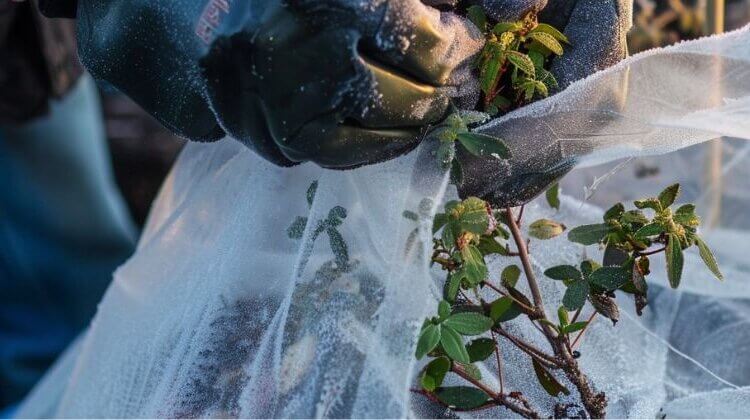
As a gardener in Northern Florida, navigating the colder months requires a keen understanding of frost protection. Due to the region’s unique climatic conditions, what works for frost protection in other areas might not necessarily be effective here. This guide provides essential tips and strategies to safeguard your garden from the chill, ensuring your plants not only survive but thrive.
Understanding Plant Hardiness and Climate Zones in North Florida
Plant hardiness zones are essential for gardeners to understand as they categorize regions based on the average annual minimum winter temperature. Much of Northern Florida, including parts of the north-central to northeastern regions, falls within Zone 9b. This classification is crucial as it guides gardeners in selecting plants that can thrive in the local climate, which typically experiences minimum temperatures between 25°F and 30°F. Understanding your zone’s characteristics helps in planning the garden effectively, from choosing the right plant varieties to timing your planting and protection strategies.
The Best Frost Protection Methods for Gardens
Protecting your garden from frost involves several strategies, each with its advantages:
- Mulching: Applying a layer of mulch around your plants can help insulate the soil, maintaining a more stable temperature and protecting roots from frost heave. Organic materials like straw, leaves, or wood chips are most commonly used.
- Cloches and Plant Covers: Portable, protective covers can shield individual plants from frost. Materials range from plastic to glass, each creating a microenvironment that wards off the cold air and traps heat.
- Row Covers and Frost Blankets: For larger garden areas, floating row covers or frost blankets can be draped over plants. These not only keep the plants warmer but also allow light and moisture to reach the plants, which is vital for their growth during chilly periods.
- Windbreaks: Planting shrubs or trees strategically or installing artificial barriers can reduce wind exposure, which is a significant factor in heat loss for plants.
Each method has its ideal application depending on the type of garden and plants you have. Combining these methods during particularly cold forecasts can further ensure your garden’s resilience against frost.
Temperature Thresholds: How Cold is Too Cold for Plants in Florida?
The temperature tolerance of plants varies widely. In Northern Florida, it’s crucial to know the cold-hardiness of your garden’s plants. Most tropical plants can suffer damage at temperatures below 40°F, while many temperate plants can tolerate much lower temperatures but might need protection if unexpected frost is forecasted.
Staying ahead of weather predictions is vital. Installing a thermometer in your garden can help you monitor the conditions actively and take action when necessary.
Navigating the Growing Season
The growing season in Northern Florida typically ranges from early spring to late autumn, but this can vary slightly each year depending on weather patterns. Gardening during this time means being vigilant from October through March, when unexpected frosts are most likely to occur.
Preparation for the growing season involves understanding when your specific plants need protection and the signs of stress due to cold in plants such as wilting, browning, and early leaf drop. Keeping a garden journal can help track the seasonal patterns and effectiveness of your frost protection strategies over the years.
Frequently Asked Questions
- What is the best frost protection for gardens? The best protection combines timely information, suitable plant selection, and the strategic use of mulches, covers, and windbreaks tailored to your specific garden needs.
- How cold is too cold for plants in Florida? It varies by plant species, but generally, temperatures that drop to freezing (32°F) are a signal to employ frost protection measures for most plants.
- What is considered the growing season in Florida? The main growing season is from early spring through late fall, but gardeners should be prepared for year-round planting and maintenance due to Florida’s mild winters.
Protecting your garden from frost in Northern Florida doesn’t have to be a daunting task. With the right knowledge and tools, you can keep your garden flourishing through the winter months. Remember, every garden is different, so tailor these tips to fit your specific situation and plant types.
Have more questions about frost protection? Or perhaps some tips of your own to share? Comment below and join the conversation. For more gardening insights, don’t forget to subscribe to our blog. Happy gardening!


Leave a Reply